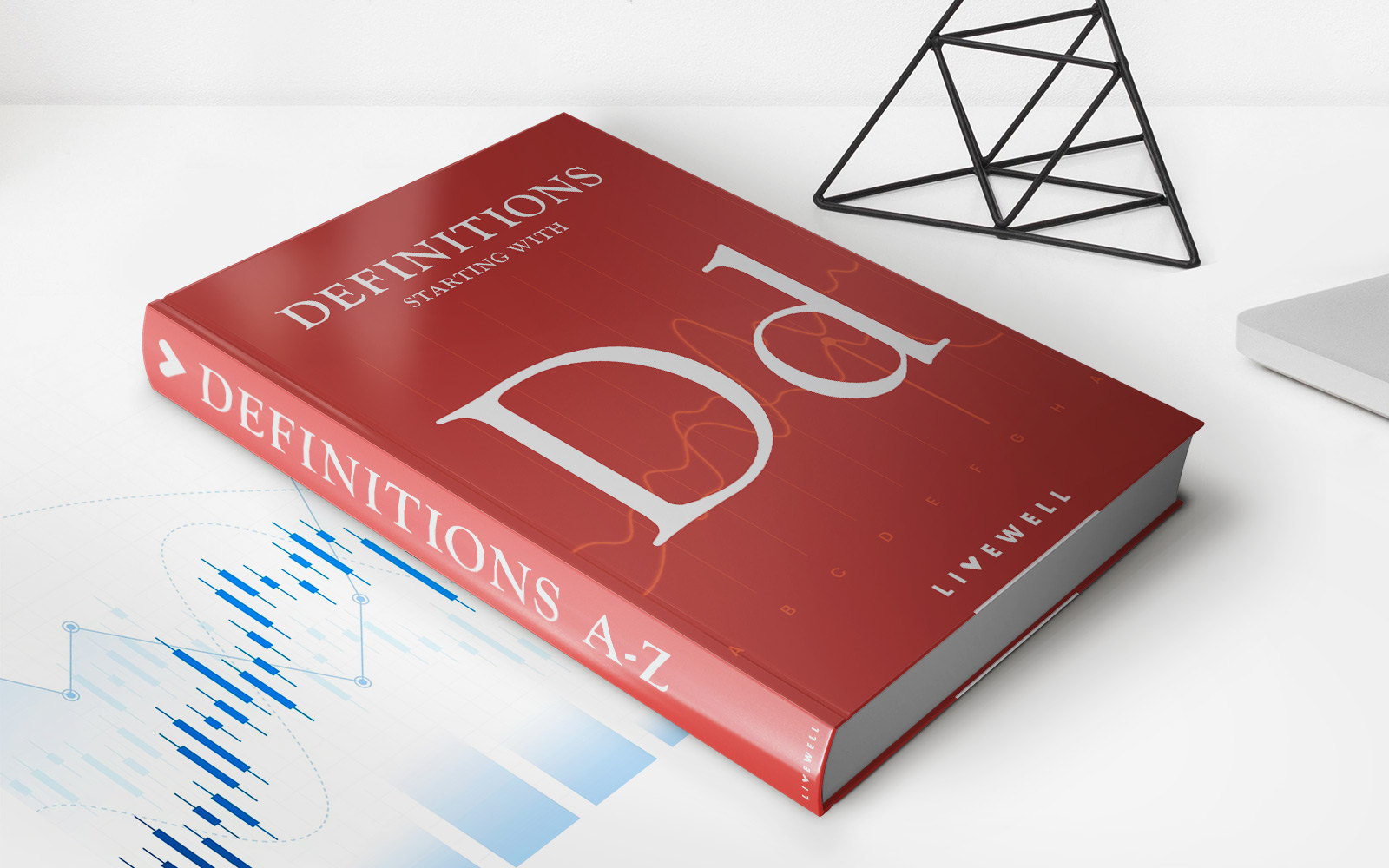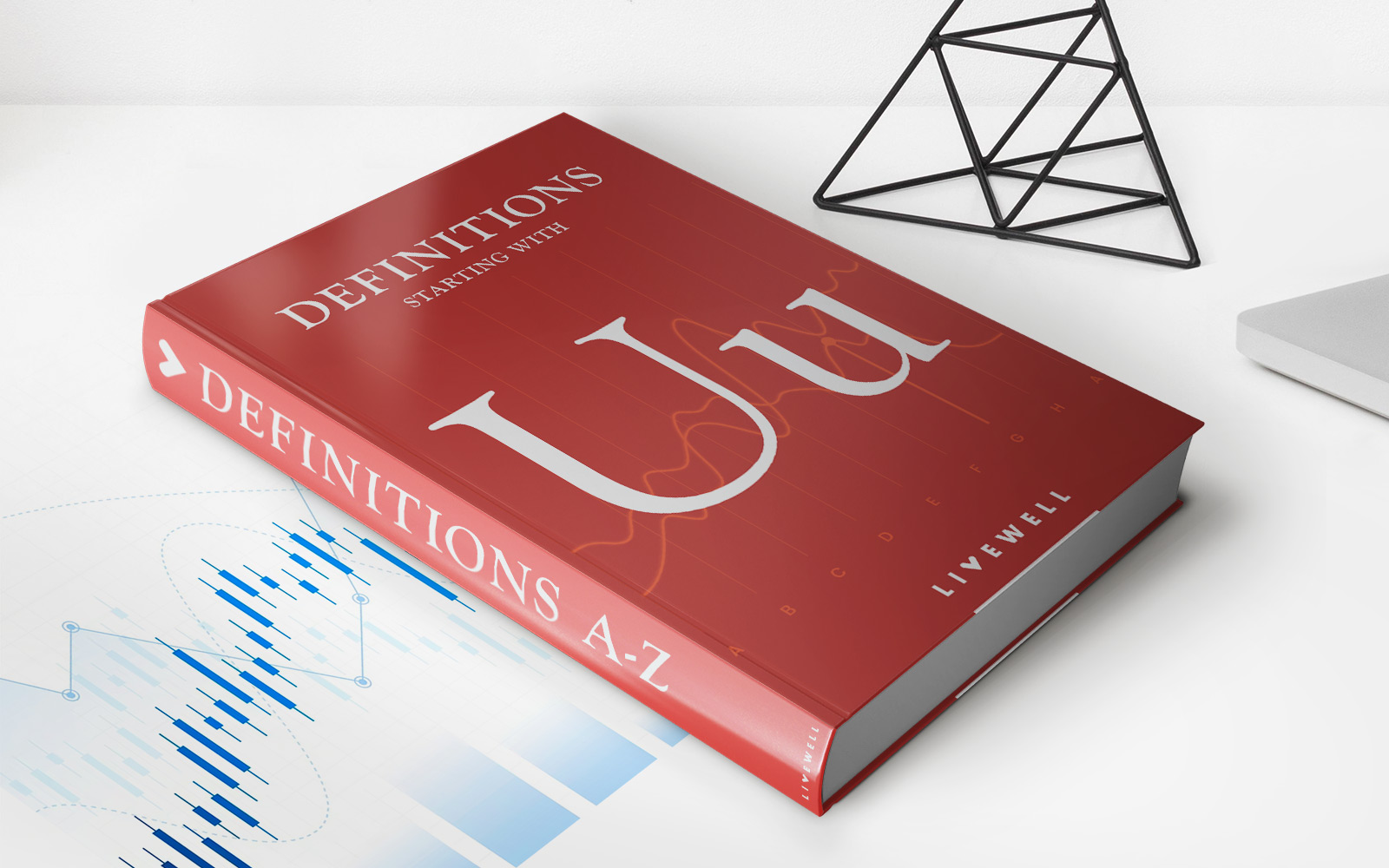

Finance
How To Choose A Life Insurance Plan
Published: October 16, 2023
Looking for the perfect life insurance plan for your financial needs? Learn how to choose the right one with our comprehensive guide on finance and insurance.
(Many of the links in this article redirect to a specific reviewed product. Your purchase of these products through affiliate links helps to generate commission for LiveWell, at no extra cost. Learn more)
Table of Contents
- Introduction
- Understanding Life Insurance
- Assessing Your Needs
- Types of Life Insurance Plans
- Term Life Insurance
- Whole Life Insurance
- Universal Life Insurance
- Variable Life Insurance
- Determining Coverage Amount
- Evaluating Premiums and Affordability
- Examining Policy Riders and Benefits
- Considering Insurance Company Ratings
- Reviewing Policy Terms and Conditions
- Assessing Customer Service and Support
- Selecting the Right Life Insurance Plan
- Conclusion
Introduction
Life insurance is a crucial financial tool that provides protection and peace of mind to individuals and their loved ones. While it may not be a topic most people like to dwell on, having a life insurance plan in place is essential for ensuring financial stability and security in the event of an unforeseen tragedy.
Choosing the right life insurance plan can be a daunting task, given the multitude of options available in the market. The process involves understanding the different types of life insurance, assessing your specific needs, evaluating premiums and affordability, and examining policy riders and benefits.
In this article, we will guide you through the process of selecting a life insurance plan that best aligns with your financial goals and circumstances. We will explore the various types of life insurance policies, discuss the factors to consider when determining coverage amount, delve into the details of premium evaluation, and highlight the importance of reviewing policy terms and conditions.
Additionally, we will address the aspect of customer service and support to help you make an informed decision. By the end, you will have a comprehensive understanding of how to choose a life insurance plan that suits your needs and provides the necessary financial protection for yourself and your loved ones.
Understanding Life Insurance
Before diving into the specifics of choosing a life insurance plan, it is important to have a clear understanding of what life insurance actually is. At its core, life insurance is a contract between an individual and an insurance company, where the individual pays a premium in exchange for a lump sum payout to their beneficiaries upon their death.
Life insurance serves as a financial safety net, providing financial protection to dependents or beneficiaries in the event of the policyholder’s untimely demise. It helps cover expenses such as funeral costs, outstanding debts, mortgage payments, educational expenses, and even ongoing living expenses.
Life insurance policies fall into two main categories: term life insurance and permanent life insurance. Term life insurance is the simpler and more affordable option, providing coverage for a specified period of time, typically 10, 20, or 30 years. Permanent life insurance, on the other hand, provides coverage for the entire lifetime of the insured individual.
There are different types of permanent life insurance, including whole life insurance, universal life insurance, and variable life insurance. Whole life insurance offers a guaranteed death benefit and accumulates cash value over time. Universal life insurance offers more flexibility in premium payments and death benefit amounts. Variable life insurance allows policyholders to invest a portion of their premiums into various investment options.
It is important to note that life insurance policies also come with policy riders, which are additional benefits that can be added to the base policy for an extra cost. Policy riders can provide features like accelerated death benefit, waiver of premium, or the ability to increase coverage without additional medical underwriting.
Now that we have a basic understanding of what life insurance is, let’s move on to assessing your needs and selecting the right life insurance plan that suits your unique circumstances.
Assessing Your Needs
When it comes to choosing a life insurance plan, it is crucial to assess your specific needs and financial situation. This evaluation will help you determine the appropriate coverage amount and the type of policy that aligns with your objectives.
Start by considering your financial responsibilities and obligations. Take into account factors such as your mortgage or rent payments, outstanding debts, and daily living expenses. Think about how much financial support your loved ones would need to maintain their current lifestyle and cover these expenses in your absence.
Additionally, consider any future financial goals you may have, such as funding your children’s education or leaving a legacy for your family. These goals will impact the amount of coverage you require.
Another important factor to consider is your current and future earnings potential. If you are the primary breadwinner in your family, it is essential to ensure that your life insurance coverage can replace your income and provide a financial cushion to your dependents.
Age and health also play a significant role in assessing your life insurance needs. Younger individuals and those in good health typically have lower premiums, while older individuals or those with pre-existing medical conditions may face higher premiums or more limited coverage options.
Finally, consider your long-term financial plans and any existing assets or investments. If you have substantial savings or investments, you may need less life insurance coverage compared to someone who has fewer assets to rely on.
By carefully evaluating these factors and consulting with a qualified financial advisor, you can determine the appropriate coverage amount and choose a life insurance plan that provides the necessary protection for your loved ones.
Types of Life Insurance Plans
Choosing the right type of life insurance plan is crucial as it determines the coverage, premiums, and potential benefits you receive. Here are the main types of life insurance plans to consider:
- Term Life Insurance: Term life insurance provides coverage for a specific period, such as 10, 20, or 30 years. It offers a death benefit to your beneficiaries if you pass away during the term of the policy. Term life insurance is generally more affordable and straightforward compared to other types.
- Whole Life Insurance: Whole life insurance provides lifetime coverage and guarantees a death benefit payout to your beneficiaries. It also includes a savings component called cash value, which accumulates over time and can be accessed or borrowed against during your life.
- Universal Life Insurance: Universal life insurance offers flexibility in premium payments and death benefit amounts. It combines a death benefit with a cash value component that earns interest over time. You can adjust the coverage and premium amounts, but be mindful of the potential impact on the policy’s cash value and longevity.
- Variable Life Insurance: Variable life insurance allows you to invest a portion of your premiums into various investment options such as stocks, bonds, or mutual funds. The cash value and death benefit can fluctuate based on the performance of the investments. This type of policy offers potential for higher returns but also comes with higher risk.
Each type of life insurance plan has its own advantages and considerations. Term life insurance is ideal for individuals who want affordable coverage for a specific period, such as when supporting dependents or paying off a mortgage. Whole life insurance caters to those seeking lifelong coverage with a savings component. Universal life insurance offers flexibility in premium payments and death benefits. Variable life insurance is suitable for individuals comfortable with investment risk and seeking potential growth.
Understanding the differences between these types of life insurance plans will help you make an informed decision based on your financial goals, budget, and risk tolerance.
Term Life Insurance
Term life insurance is a type of life insurance that provides coverage for a specific period, known as the term. It offers a death benefit payout to your beneficiaries if you pass away during the term of the policy. Here are some key points to know about term life insurance:
- Flexibility: Term life insurance policies typically offer flexibility in choosing the term length, such as 10, 20, or 30 years. This allows you to align the coverage period with your specific needs, such as supporting dependents or paying off a mortgage.
- Affordability: Term life insurance is generally more affordable compared to other types of life insurance. Since it provides coverage for a specific period without any cash value component, the premiums tend to be lower.
- Pure Protection: Term life insurance focuses on providing pure protection and a death benefit to your beneficiaries. It does not offer any savings or cash value component like whole or universal life insurance.
- Renewability and Convertibility: Some term life insurance policies come with the option to renew the coverage at the end of the term or convert it into a permanent life insurance policy. This can be beneficial if you anticipate a need for continued coverage or want to transition to a different type of policy in the future.
- No Equity or Investment Component: Term life insurance does not build cash value over time. This means that if you outlive the term of the policy, there is no return on the premiums you have paid.
Term life insurance is a popular choice for individuals seeking affordable and straightforward coverage for a specific period. It provides peace of mind knowing that your loved ones will receive a financial payout in the event of your passing during the term of the policy.
When considering term life insurance, it is important to assess your specific needs, such as the duration of coverage required and the amount of death benefit needed to provide financial security to your beneficiaries. By comparing quotes from different insurance providers and understanding the terms and conditions of the policy, you can select the right term life insurance plan that suits your budget and provides the necessary protection.
Whole Life Insurance
Whole life insurance is a type of permanent life insurance that provides coverage for the entire lifetime of the insured individual. It offers both a death benefit to your beneficiaries and a savings component called cash value. Here are some key points to know about whole life insurance:
- Lifetime Coverage: Whole life insurance provides coverage for your entire life, as long as you keep paying the premiums. This ensures that your beneficiaries will receive a death benefit payout when you pass away, regardless of the age at which it happens.
- Guaranteed Death Benefit: Whole life insurance comes with a guaranteed death benefit, meaning that the payout to your beneficiaries is fixed and will not decrease as long as the premiums are paid.
- Cash Value Accumulation: One of the distinct features of whole life insurance is the cash value component. A portion of your premium payments goes towards this cash value, which grows over time. You can access or borrow against this cash value during your lifetime.
- Tax Advantages: The cash value component of whole life insurance accumulates on a tax-deferred basis. This means that you do not have to pay taxes on the growth until you withdraw or borrow against it.
- Potential Dividends: Some whole life insurance policies come with the potential for earning dividends. These dividends are a share of the insurance company’s profits and can be paid out to policyholders. They can be used to increase the cash value, enhance the death benefit, or be received as cash payments.
Whole life insurance is suitable for individuals who are looking for lifelong coverage and the additional benefits of a cash value component. It can provide financial security to your loved ones, serve as an inheritance, or be used to fulfill estate planning needs.
It is important to note that whole life insurance tends to have higher premiums compared to term life insurance. However, the premiums remain fixed throughout the life of the policy, making it a predictable and stable financial commitment.
When considering whole life insurance, it is essential to assess your financial goals, long-term needs, and ability to afford the premiums. Consulting with a financial advisor can help you determine if whole life insurance is the right option for your specific circumstances.
Universal Life Insurance
Universal life insurance is a type of permanent life insurance that offers flexibility in premium payments and death benefit amounts. It combines a death benefit with a cash value component that earns interest over time. Here are some key points to know about universal life insurance:
- Flexible Premiums: Universal life insurance allows you to adjust the premium payments within certain limits. You have the option to pay more than the required premium, which can help increase the cash value or cover any missed payments in the future.
- Adjustable Death Benefit: With universal life insurance, you have the flexibility to increase or decrease the death benefit amount, within certain guidelines set by the insurance company. This allows you to customize the coverage amount based on your changing needs and financial situation.
- Cash Value Accumulation: Similar to whole life insurance, universal life insurance also has a cash value component. A portion of your premium payments goes towards the cash value, which earns interest over time. The cash value can be accessed or borrowed against during your lifetime.
- Interest Rate Variability: The interest rate on the cash value of a universal life insurance policy is not fixed. It can vary based on the performance of the insurance company’s investment portfolio or a benchmark interest rate.
- Flexible Policy Loans: Universal life insurance policies often allow policyholders to take out loans against the accumulated cash value. These loans can be useful if you need access to funds for various purposes, such as emergencies or other financial obligations.
Universal life insurance offers a balance between the flexibility of premium payments and the benefits of permanent life insurance. It can be suitable for individuals who want lifelong coverage but also want the ability to adjust their premium payments and death benefit as their financial circumstances change.
When considering universal life insurance, it is important to understand the policy details, including the interest rate structure, fees and charges, and the impact of adjustments to premiums and death benefits on the cash value accumulation. Consulting with a financial advisor can help you evaluate if universal life insurance aligns with your financial goals and risk tolerance.
Variable Life Insurance
Variable life insurance is a type of permanent life insurance that allows policyholders to invest a portion of their premiums into various investment options, such as stocks, bonds, or mutual funds. Here are some key points to know about variable life insurance:
- Investment Component: Variable life insurance combines a death benefit with an investment component. Policyholders have the opportunity to allocate a portion of their premiums into investment options offered by the insurance company.
- Investment Choices: The investment options available in variable life insurance policies can vary based on the insurance company. Common choices include equity funds, bond funds, and money market funds. The investment performance directly impacts the cash value and death benefit of the policy.
- Flexibility and Control: Variable life insurance offers flexibility and control over the investment component. Policyholders can choose among different investment options and adjust their allocations over time, based on their risk tolerance and investment goals.
- Risk and Return Potential: The investment component of variable life insurance introduces risk and potential for higher returns. The value of the policy’s cash value and death benefit can fluctuate based on the performance of the chosen investment options. However, this also means that there is a possibility for the cash value and death benefit to grow beyond what is guaranteed.
- Important Considerations: Since variable life insurance involves investment, it is subject to market volatility and investment risk. It is essential to carefully review the prospectus and understand the investment options and associated fees. Additionally, it is crucial to have a long-term investment outlook and a comprehensive understanding of the potential tax implications.
Variable life insurance is typically suitable for individuals who are comfortable with investment risk and seek the potential for higher returns within their life insurance policy. It can be appealing for those who want both the protection of a life insurance policy and the opportunity to grow their policy’s cash value through investment.
Before considering variable life insurance, it is important to assess your risk tolerance, investment knowledge, and long-term goals. Consulting with a financial advisor who specializes in insurance and investments can help you determine if variable life insurance is the right choice for your specific financial situation.
Determining Coverage Amount
Determining the appropriate coverage amount for your life insurance policy is crucial to ensure that your loved ones are financially protected in the event of your passing. The coverage amount should be sufficient to cover immediate and future financial needs. Here are some factors to consider when determining the coverage amount:
- Financial Responsibilities: Start by assessing your financial responsibilities and obligations. Consider factors such as mortgage or rent payments, outstanding debts, and daily living expenses. The coverage amount should be enough to cover these expenses, allowing your loved ones to maintain their current lifestyle.
- Income Replacement: If you are the primary income earner in your family, it is important to ensure that the life insurance coverage can replace your income. The coverage amount should be able to provide a financial cushion for your dependents, allowing them to meet their financial needs and obligations in your absence.
- Future Financial Goals: Take into account any future financial goals you have, such as funding your children’s education or leaving a legacy for your family. The coverage amount should consider these objectives, ensuring that there are sufficient funds available to meet these goals even if you’re no longer around.
- Existing Assets and Investments: Consider any existing savings, investments, or other assets that may provide financial support to your loved ones. The coverage amount should take into account these assets, ensuring that the life insurance payout is in addition to any existing resources.
- Age and Health: Age and health can also impact the coverage amount. Younger individuals and those in good health generally have longer life expectancies, which may require a higher coverage amount to ensure long-term financial security for their loved ones.
It is recommended to consult with a financial advisor or insurance professional to determine the appropriate coverage amount based on your specific circumstances. They can help you evaluate your financial needs, analyze different scenarios, and select a coverage amount that provides adequate protection for your loved ones.
Keep in mind that it is better to err on the side of caution when determining the coverage amount. It is always wise to have a slightly higher coverage amount to account for unexpected expenses or changes in circumstances. Regularly reviewing and adjusting your coverage amount as your situation changes is also important to ensure ongoing financial protection.
Evaluating Premiums and Affordability
When choosing a life insurance plan, it is essential to evaluate the premiums and ensure that the policy is affordable within your budget. Here are some key factors to consider when assessing the premiums and affordability of a life insurance policy:
- Shop Around for Quotes: Begin by obtaining quotes from multiple insurance providers. Comparing quotes allows you to identify differences in premiums for similar coverage amounts and policy types. This helps you make an informed decision and find a policy with competitive premiums.
- Consider Term Length: For term life insurance, the length of the term can impact the premiums. Generally, longer-term policies have higher premiums due to the increased likelihood of a payout. Assess your needs and choose a term length that aligns with your financial goals while still being affordable.
- Assess Coverage Amount: The coverage amount directly affects the premiums. Higher coverage amounts result in higher premiums. Evaluate your coverage needs carefully to ensure you have adequate protection, but avoid over-insuring, as it will contribute to higher premiums.
- Age and Health Impact: Your age and health can significantly impact the premiums of a life insurance policy. Younger and healthier individuals generally receive more favorable premium rates. Consider purchasing life insurance earlier in life when premiums are typically lower.
- Consider Payment Frequency: Premiums can often be paid on a monthly, quarterly, semi-annual, or annual basis. Some insurance providers offer discounts for annual premium payments. Assess your cash flow and choose the payment frequency that aligns with your budget.
- Review Policy Riders: Additional policy riders can increase premiums. Evaluate the value and necessity of riders such as accidental death benefit, disability waiver, or critical illness coverage. Include only the riders that provide significant value based on your needs.
- Consider Future Financial Ability: While current affordability is crucial, also consider your ability to afford the premiums in the future. Ensure that the premiums fit comfortably within your long-term financial plan and that any potential premium increases can be accommodated.
It is important to balance affordability with adequate coverage. It may be tempting to opt for the cheapest policy available, but it is equally important to ensure that the policy meets your coverage needs and offers the necessary financial protection for your loved ones.
Consulting with a knowledgeable insurance professional can help you navigate through the process and find a life insurance policy that strikes the right balance between premiums and affordability, providing the desired level of coverage within your budget.
Examining Policy Riders and Benefits
When selecting a life insurance plan, it is important to carefully examine the available policy riders and additional benefits. These options can enhance the coverage and provide additional financial protection based on your needs. Here are some key riders and benefits to consider:
- Accidental Death Benefit: This rider pays an additional death benefit if the insured dies as a result of an accident. It can provide an extra layer of financial protection in case of accidental death.
- Waiver of Premium: With this rider, if the insured becomes disabled or unable to work due to injury or illness, the insurance company waives the premium payments. This ensures that the policy remains in force during the period of disability.
- Critical Illness Coverage: Critical illness riders provide a lump sum payout if the insured is diagnosed with a specified critical illness, such as cancer, heart attack, or stroke. This benefit can help cover medical expenses and other financial obligations during a challenging time.
- Long-Term Care Riders: These riders provide coverage for long-term care expenses in case the insured requires assistance with daily activities such as bathing, dressing, or eating. It can be an important consideration for individuals concerned about potential long-term care costs.
- Child or Spousal Term Rider: This rider allows you to add coverage for your spouse or children to your life insurance policy. It provides a death benefit if the covered individual passes away during the term of the rider. It can provide additional financial protection for your family members.
- Return of Premium: This rider refunds a portion or all of the premiums paid if the insured outlives the term of the policy. While this can result in higher premiums, it can provide you with a return on your investment if you do not require the death benefit.
- Income Replacement Benefit: This benefit provides a regular income stream to your beneficiaries for a specified period after your death. It can help replace lost income and cover ongoing financial needs.
When examining policy riders and benefits, it is important to assess their relevance to your specific situation and goals. Consider your family’s needs, health conditions, and any potential risks you want to address. It is also essential to review the costs associated with each rider or benefit and ensure that they fit within your budget.
Take the time to understand the terms and conditions of each rider, including any limitations or exclusions. Discuss your options with an insurance professional who can provide expert guidance and help you determine which riders or benefits are most appropriate for your life insurance policy.
Considering Insurance Company Ratings
When selecting a life insurance plan, it is crucial to consider the ratings and reputation of the insurance company. The financial strength and stability of the insurer impact its ability to fulfill its obligations and pay out claims. Here are some key factors to consider when evaluating insurance company ratings:
- Independent Rating Agencies: Independent rating agencies, such as AM Best, Standard & Poor’s, and Moody’s, assess the financial strength and stability of insurance companies. They assign ratings based on factors like capital adequacy, claims-paying ability, and overall financial performance.
- Financial Strength Ratings: Financial strength ratings indicate the insurer’s ability to meet its financial obligations. Ratings typically range from AAA (highest) to C (lowest). It is advisable to select an insurance company with a rating of A or higher, as it signifies strong financial stability.
- Claims-Paying Ability: An insurance company’s ability to settle claims in a timely and efficient manner is crucial. Research the company’s reputation for prompt claims processing and customer satisfaction. Look for information and reviews from policyholders or consult with an independent insurance agent to gauge the company’s claims-paying ability.
- Longevity and Track Record: Consider the insurance company’s longevity and history in the industry. Companies with a long track record of successful operations are more likely to have established reliable systems, a robust claims process, and the ability to weather economic downturns.
- Industry Rankings and Awards: Industry rankings and awards can provide further insights into the insurance company’s reputation and standing within the industry. Look for recognition from reputable publications or organizations that specialize in evaluating insurance companies.
- Financial Stability: Evaluate the insurer’s financial stability by reviewing their annual reports, financial statements, and earnings reports. Assess factors like their investment portfolio, profitability, and growth over time.
Considering insurance company ratings helps ensure that you select a reliable and financially secure insurer that can fulfill its obligations in the long run. Remember, life insurance is a long-term commitment, and you want to be confident that the company will be there to provide the promised benefits when needed.
Researching and comparing multiple insurance companies, their ratings, and their reputation can help you make an informed decision. Consult with an independent insurance agent who can provide expert advice tailored to your specific needs and help you select a reputable insurer with strong financial ratings.
Reviewing Policy Terms and Conditions
Before committing to a life insurance plan, it is crucial to thoroughly review and understand the policy’s terms and conditions. The terms and conditions outline the rights and obligations of both the policyholder and the insurance company. Here are key factors to consider when reviewing the policy’s terms and conditions:
- Coverage Details: Understand the specifics of the coverage provided by the policy. Review the death benefit amount, any exclusions or limitations, and whether the coverage is guaranteed or subject to certain conditions.
- Policy Premiums: Take note of the premium amounts, frequency of payments, and any potential rate increases over time. Understand if the premiums are level throughout the policy’s term or subject to adjustments.
- Policy Riders and Benefits: If you have chosen any policy riders or additional benefits, carefully review their terms and conditions. Understand any requirements for activation, limitations, or exclusions associated with each rider or benefit.
- Grace Period: Familiarize yourself with the grace period specified in the policy. The grace period is the timeframe during which you can make a premium payment after the due date without the policy lapsing.
- Policy Exclusions: Identify any specific exclusions mentioned in the policy. Exclusions are conditions or situations that the insurance company will not cover. It is important to be aware of these exclusions to avoid any surprises down the line.
- Surrender Value: If you have a permanent life insurance policy, determine whether it has a surrender value. The surrender value is the amount you can receive if you choose to cancel the policy before its maturity. Understand any fees or penalties associated with surrendering the policy.
- Policy Renewability and Conversion: For term life insurance policies, review the terms regarding policy renewability at the end of the term and the availability of conversion to a permanent policy. Understand any limitations or requirements associated with these options.
Ensure that you fully understand the terms and conditions of the policy before making a commitment. If there are any unclear or confusing aspects, reach out to your insurance agent or company representative for clarification.
Keep in mind that the policy terms and conditions are binding, so it is important to read and understand them thoroughly. It is better to ask questions and seek clarification upfront rather than discovering unexpected details later on.
By reviewing and understanding the policy terms and conditions, you can make an informed decision and select a life insurance policy that aligns with your needs and provides the desired level of coverage.
Assessing Customer Service and Support
When choosing a life insurance plan, it is essential to consider the customer service and support provided by the insurance company. A reliable and responsive customer service team can make a significant difference in your overall experience. Here are key factors to assess when evaluating customer service and support:
- Communication Channels: Determine the various communication channels available for reaching the insurance company, such as phone, email, online chat, or in-person agents. Consider your preferred method of communication and ensure it aligns with the options provided.
- Response Time: Research the average response time of the insurance company’s customer service team. Prompt and efficient responses to queries or concerns are essential, especially when it comes to addressing policy-related matters or claims.
- Accessibility: Consider the accessibility of the customer service team during different hours, including evenings, weekends, and holidays. It is important to know if assistance is available when you need it, especially for emergency situations.
- Professionalism and Knowledge: Interact with the customer service team to gauge their professionalism and knowledge regarding life insurance products and services. A well-informed and courteous team can provide accurate information and guide you through the decision-making process.
- Claims Process: Research the insurer’s reputation for claims handling. Look for reviews or feedback from policyholders regarding their experience with the claims process. A smooth and efficient claims process is crucial during a difficult time when your loved ones may need to file a claim.
- Online Account Management: Explore the insurer’s online platform, if available. Evaluate its user-friendliness and functionality, such as policy management, premium payment options, access to policy documents, and the ability to update personal information.
- Customer Reviews and Ratings: Consider reading customer reviews and ratings of the insurance company. Look for feedback on customer service experiences, claims handling, and overall satisfaction. However, it is important to evaluate reviews from credible sources and consider the overall consensus.
Assessing the customer service and support provided by the insurance company helps ensure that you will have a positive and satisfactory experience throughout the life of your policy. Good customer service provides peace of mind, knowing that you can rely on the insurer for assistance and support when needed.
Take the time to reach out to the insurer’s customer service team, ask questions, and evaluate their responsiveness and willingness to assist you. This will give you a sense of the level of support you can expect throughout your relationship with the insurance company.
Remember, stellar customer service is just as important as the coverage and premiums when selecting a life insurance plan. Prioritize an insurer that demonstrates a strong commitment to delivering excellent customer service and support.
Selecting the Right Life Insurance Plan
Choosing the right life insurance plan is a critical decision that requires careful consideration of your financial needs, goals, and circumstances. Here are the key steps to follow in selecting the right life insurance plan:
- Assess Your Needs: Begin by evaluating your financial responsibilities, such as mortgage payments, outstanding debts, and ongoing living expenses. Consider the financial support your loved ones would require if you were no longer there to provide for them. Additionally, think about any future financial goals you have, such as funding your children’s education or leaving a legacy for your family.
- Evaluate Coverage Options: Understand the different types of life insurance plans available, including term life insurance, whole life insurance, universal life insurance, and variable life insurance. Consider the advantages, costs, and specific features of each type. Align the coverage options with your needs and financial goals.
- Review Premiums and Affordability: Compare quotes from multiple insurance providers to evaluate premiums and ensure affordability. Consider the duration of premium payments, any potential rate increases, and the payment frequency options. Strive for a balance between coverage and affordability within your budget.
- Examine Policy Riders and Benefits: Assess any available policy riders and additional benefits that could enhance the coverage. Consider riders such as accidental death benefit, critical illness coverage, or waiver of premium. Review the terms, costs, and relevance of each rider to your specific needs.
- Consider Insurance Company Ratings: Evaluate the financial strength and stability of insurance companies by reviewing their ratings from independent rating agencies. Look for companies with high ratings and a strong track record of claims payment. Consider their reputation, longevity, and customer reviews to ensure reliability.
- Review Policy Terms and Conditions: Thoroughly read and understand the policy’s terms and conditions. Evaluate the coverage details, premiums, exclusions, grace periods, and surrender value. Ensure that the terms align with your expectations and provide the necessary protection for your loved ones.
- Assess Customer Service and Support: Consider the accessibility, responsiveness, and professionalism of the insurance company’s customer service team. Review their ability to handle claims efficiently and provide ongoing support. Good customer service is crucial for a positive and hassle-free experience.
By following these steps and conducting thorough research, you can select the right life insurance plan that meets your financial needs, aligns with your goals, offers affordable premiums, and is supported by a reputable insurance company.
It is recommended to seek guidance from a qualified financial advisor or insurance professional who can provide personalized advice based on your individual circumstances. They can assist you in navigating through the available options and empower you to make an informed decision that provides peace of mind and financial security for you and your loved ones.
Conclusion
Choosing the right life insurance plan is a significant decision that requires careful consideration of your financial needs, goals, and circumstances. By understanding the different types of life insurance policies available, assessing your coverage needs, evaluating premiums and affordability, and reviewing policy riders and benefits, you can make an informed decision that provides the necessary financial protection for your loved ones.
Term life insurance offers affordable coverage for a specific period, while whole life insurance provides lifelong protection with a cash value component. Universal life insurance offers flexibility in premium payments and death benefits, and variable life insurance allows for investment opportunities within the policy.
Determining the coverage amount should take into account your financial responsibilities, income replacement needs, future goals, and existing assets. Evaluating premiums and affordability involves comparing quotes, considering term length, and reviewing the frequency of payments.
Examining policy riders and benefits allows you to enhance your coverage with options such as accidental death benefit, critical illness coverage, or long-term care provisions. Considering insurance company ratings ensures that you select from financially stable and reliable insurers who can fulfill their obligations.
Reviewing the policy’s terms and conditions is crucial to understand the coverage details, premium obligations, grace periods, exclusions, and surrender value. Assessing customer service and support ensures that you have access to a responsive and helpful team when you need assistance with your policy or claims.
By following these steps and seeking guidance from professionals, you can confidently select the right life insurance plan that meets your needs and provides the desired level of financial protection. Remember to regularly review your policy and make necessary adjustments as your circumstances change over time.
Life insurance is not just about preparing for the future; it is about providing security and peace of mind for you and your loved ones. With the right life insurance plan in place, you can have confidence knowing that your financial obligations will be covered, your loved ones will be protected, and your legacy will be preserved.














